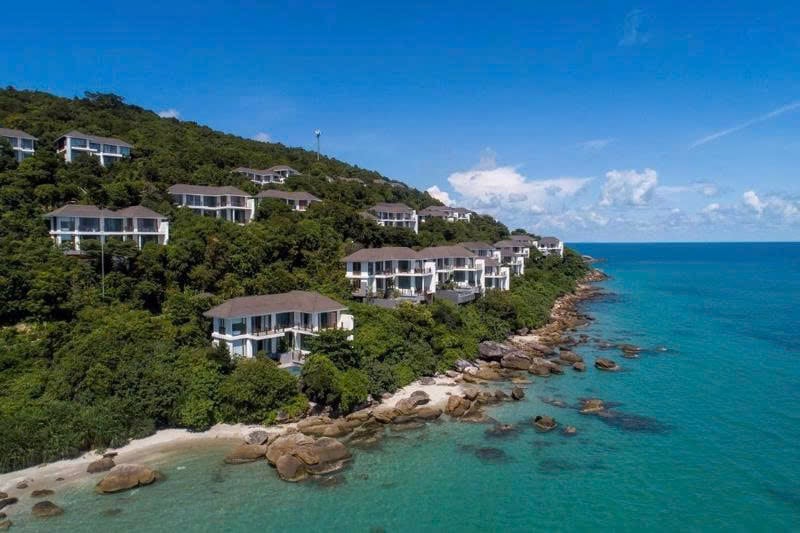By
Vu Pham, Minh Hue
Mon, March 17, 2025 | 10:31 pm GMT+7
Vietnam’s resort real estate market has not yet rebounded as expected, with very low sales in the first two months of the year, according to consultancy DKRA Group.

A resort project in Vietnam. Photo courtesy of VnEconomy.
A DKRA report on the resort real estate market for the first two months of 2025 showed that the resort villa segment had 60 projects with 2,166 units, an increase of 5% year-on-year.
Of these, 56 units were sold, 1.5 times higher than the same period in 2024. Although primary supply rose, it remained modest compared to the 2019-2020 period.
Vo Hong Thang, investment director at DKRA Group, said that market liquidity remained low. Demand increased modestly, with transactions mainly focusing on products priced below VND10 billion ($391,700) per unit.
The primary sale price did not see much fluctuation and continued to move sideways. In the northern region, the lowest primary price was VND6 billion ($235,018) per unit, and the highest was VND106 billion ($4.15 million).
The respective figures were VND14.6 billion and VND134.4 billion in the central region, and VND5.2 billion and VND155.7 billion in the southern region.
“Policies like leaseback or repurchase commitments and interest rate support are still widely applied but do not prove effective as expected. The market still faces many challenges in terms of liquidity and price increases, with investor confidence and the recovery of this segment remaining very low,” he said.
As for resort townhouses and shophouses, there were 31 projects with 3,434 units, up 1% year-on-year, but only five of them were sold, a decrease of 87%.
Thang stated that while primary supply increased, all of the supply came from unsold inventory of projects launched in the previous years, and the new supply was still quite modest, accounting for only 0.5% of the total national supply.
Market liquidity almost stagnated, with purchasing power decreasing significantly. The transaction volume was only equivalent to 13% of the same period last year.
The primary sale price did not witness much change and remained high due to input cost pressure. In the northern region, the lowest price was VND4.6 billion ($180,180) per unit, and the highest was VND34.2 billion ($1.34 million).
The respective figures were VND6 billion and VND56.7 billion in the central region, and VND5.8 billion and VND70 billion in the south. In the Central Highlands, the lowest price was VND5.2 billion per unit, while the highest was VND16.2 billion.
“Although the tourism sector shows positive signs of recovery, the market has still faced significant liquidity pressure and there are no signs of recovery yet,” he said.
99% of supply comes from old projects
For condotels, the supply reached 4,727 units, down 6% compared to the same period last year, with 216 units sold, a 6.7% increase year-on-year.
According to Thang, the supply in the first two months of the year continued to decline by about 6% year-on-year. Most of the supply came from unsold inventory of old projects, which accounted for 99% of the total national supply.
Although market demand showed improvement, 6.7 times higher than the same period in 2024, it was still quite low compared to the 2019 period. Most transactions were seen in projects with complete legal paperwork and priced below VND3.5 billion ($137,094) per unit.
The central and southern regions continued to lead the market, making up 87% of the total supply and 85% of the total primary absorption nationwide.
The primary sale price remained stable. In the northern region, the lowest price was VND37.8 million ($1,480) per square meter, and the highest was VND141.1 million ($5,527). The respective prices were VND42.4 million and VND180 million in the central region, and VND61.8 million and VND154.5 million in the southern region.
“Challenges such as legal entanglements, exploitation effectiveness, and investor confidence remained barriers that prevented the market from recovering in the short term,” Thang concluded.
Meanwhile, experts believed that legal obstacles prevented many projects from being launched, while high-value inventory resulted in low liquidity. Additionally, unrestored investor confidence was one of the main reasons for the prolonged market difficulties.
From: The Investor
Real Estate News










